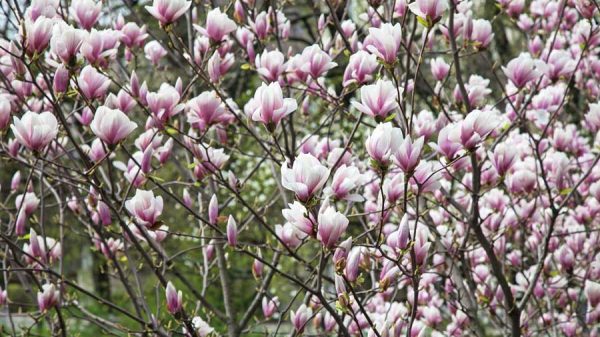It’s amazing how a sprinkling of sunny days and a little drier weather draw us into the garden, although I’m in the garden every day come rain or shine my greenhouse and potting shed providing shelter on the most miserable days. Everyone should have a special place where they can escape the stresses and pressures of modern life, and just daydream with a warm drink in hand.
May is a busy time in the garden, so much to do, weeding, mowing, sowing, potting, the list is endless so it’s important to be as organised as you can. I have found that the older I get the more I need to have a list, especially of things that need doing in the garden.
I love Alliums, the ornamental onions, their tall stems with a large pom-pom of purple or white flowers give height and a splash of early colour as the herbaceous perennials put on growth. The only thing is that the leaves start to wither as the flower reaches its peak so growing them beneath low growing shrubs or between herbaceous perennials like Lupins or Delphiniums means that the untidy foliage is somewhat obscured. As the flowers fade they turn a strawy brown but keep their shape, they are a plant that we say ‘Dies well’ the remaining stalk and seed head as equally attractive as when in flower. The added bonus is that they can be cut and stored in a dry shed or garage, and used in seasonal flower arrangements, they look great sprayed gold or silver in Christmas arrangements.
Some plant on the other hand can soon become untidy, and a technique developed by gardeners to help keep some herbaceous plants in a little better shape is what is termed the ‘Chelsea Chop’ or the ‘Hampton Hack’, the reference to Chelsea and Hampton is not regarding their grandeur but the time of the year when each gardening show is on.
The ‘Chelsea’ chop is done in towards the end of May on hardy perennials such as Border Phlox, Aster, Rudbeckia, Nepeta, Campanula and Helianthus, it involves reducing growth by one third to a half and results in delayed flowering but a much stronger slightly shorter plant. If you have more than one plant then you can cut some and leave some so you extend the flowering period.

The ‘Hampton’ hack, carried our in June/July, involves cutting back early flowering plants as they finish flowering to just above ground level, this stops them seeding around and in some cases results in repeat flowering, especially useful on some Hardy Geraniums, Alchemilla, Pulmonaria, Oriental Poppies, and some Salvia that flower early.

It’s a good idea to give plants a feed after cutting back and in dry weather water them every fortnight for the first month.
Growing vegetables is very rewarding, and even on a small scale can provide a treat as they taste so different to most shop bought produce. Certain crops like lettuce, salad leaves, spring onions, peas for shoots and radish can be sown every two to three weeks from now until August, providing a continuous supply of fresh leaves and roots for sandwiches and salads. French and runner beans, beetroot, carrots and parsnips direct into prepared beds. Roots vegetables much prefer sowing into prepared soil. Starting them off in modules can cause root disturbance often causing the young roots spiral with the resulting crop producing twisted and distorted roots. Sowing directly in free draining soil encourages the first roots to search for moisture and in doing so produces a long thin tap root which later swells to produce what we recognise as the vegetable. The challenge is sow very thinly, as if all the seeds germinate you will have quite a challenge thinning them out and that is when the infamous carrot fly attack. I sow two to three seeds every three inches (7.5cm) and although there may be some that don’t germinate I rarely have to thin them out. If there is a gap in the row I sprinkle a few lettuce seeds and pull them when they are about six inches (15cm) tall.
I grow most of my brassicas (cabbage, cauliflower, sprouts and broccoli) in seed trays or modules and pot them into three inch (7cm) pots planting them out as well established plants which means they grow away well. I also take the lowest two leaves off the plant and plant them up to the next pair of leaves, this encourages them to produce a secondary root system and subsequently a stronger plant.
If you have limited time, not much space or are just starting out with veg growing then you will have more success buying plants than sowing seed for all except salad vegetables and potatoes.
Happy Gardening, Martin.
Next month, feeding and dead heading, weeds in your lawn, keep an eye on fruit .







